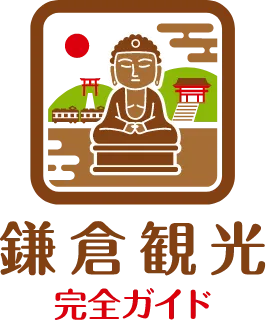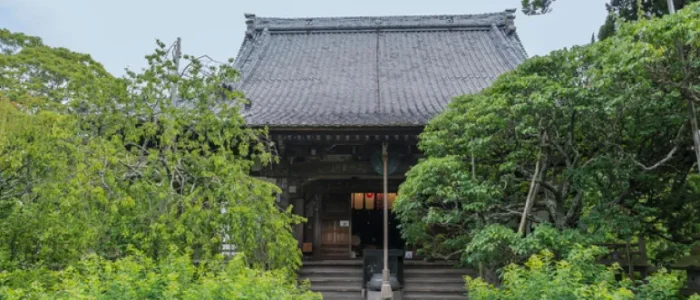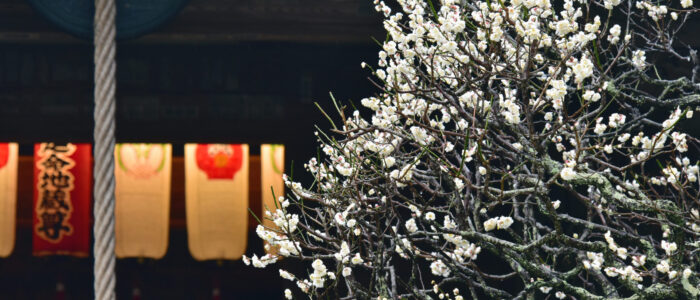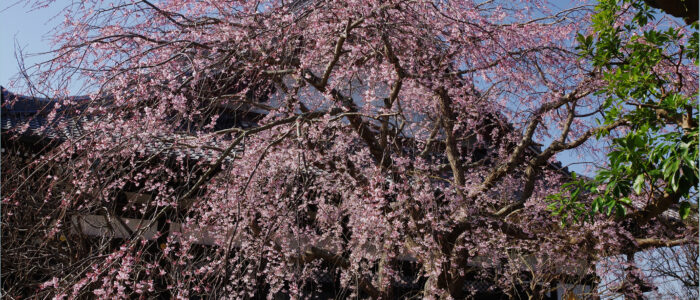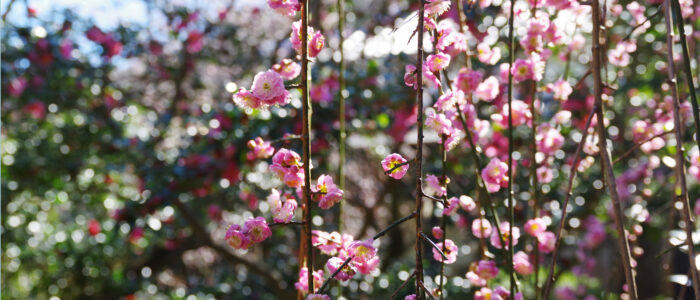Hokai-ji Temple (宝戒寺)
Discover Hokai-ji Temple (宝戒寺)
Hokai-ji Temple is a historic temple of the Tendai sect, founded in the early 14th century under the instruction of Emperor Go-Daigo (後醍醐天皇). It was built by Ashikaga Takauji (足利尊氏), the first shogun of the Muromachi shogunate, to memorialize the Hojo clan (北条氏), who perished after the fall of the Kamakura shogunate. The temple stands on the former site of the Komachitei (小町亭) residence, once home to the Hojo family, with the ruins of Tōshō-ji Temple (東勝寺) — where Hojo Takatoki (北条高時) and others took their own lives — located just behind it. Though the original buildings were destroyed by fire in the early 16th century, they were rebuilt in the early 17th century with the support of Tokugawa Ieyasu (徳川家康).
Temple Highlights: Architecture, Nature & Sacred Statues
The principal deity of Hokai-ji Temple is Kosodate Kyodoku Jizo Bosatsu (子育経読地蔵大菩薩), a guardian of childrearing, designated as an Important Cultural Property. Sculpted in the late 14th century by Ken’en (憲円), a Buddhist sculptor from Sanjo, Kyoto, the statue’s gentle expression continues to comfort all who visit. Hokai-ji is also the first stop on the Kamakura 24 Jizo Pilgrimage.
The main hall also houses revered figures such as Bishamonten (毘沙門天), the god of victory; Juntei Kannon (准胝観音), the mother of Buddhas; Enma Daio (閻魔大王), the fierce judge of the underworld; and colorful depictions of goddesses of fortune and connection. A separate hall enshrines Daisho Kangisojin Tenno (大聖歓喜双身天王), a rare hidden Buddha from the late Kamakura period, featuring traditional joined-wood construction and decorative clay ornamentation.
Spiritual Blessings and Cultural Significance
Hokai-ji Temple holds an important place in Buddhist tradition as a kaidan-in, a temple with an ordination platform. Its founding priest, Enkan (円観), was a prominent monk of the Tendai sect and honored with the title “National Teacher of Five Dynasties.” The temple draws worshippers seeking blessings for parenting, victory in life, and protection from misfortune.
Seasonal Beauty and Cultural Experiences
Nicknamed the “Temple of White Bush Clover,” Hokai-ji delights visitors in mid-September with blooming hagi (bush clover), often paired with vibrant red spider lilies. Spring brings cherry blossoms, while winter showcases plum blossoms and camellias. The temple also offers shakyo (sutra-copying) experiences for a 1,000 yen donation — a tranquil way to reflect on Buddhist teachings.
Omikuji, Goshuin & Unique Traditions
Various goshuin (temple stamps) are available, including those for Kosodate Jizo, Juntei Kannon, Namu Daishi, Bishamonten, and Amida Nyorai. The temple’s signature stamp features a hagi motif. As of September 2024, special edition stamps for the Goddesses of Fortune and Connection have been introduced. Original stamp books and decorative shikishi papers are also available for purchase.
How to Get There from Tosh’s Place (トシズプレイス)
Hokai-ji Temple is just a 3-minute walk from the third torii gate of Tsurugaoka Hachimangu Shrine (鶴岡八幡宮), or 13–15 minutes from the East Exit of Kamakura Station (鎌倉駅). By bus, take the Enoden Bus to “Kamakura Hachimangu-mae” (鎌倉八幡宮前) — a 6-minute walk — or the Keikyu Bus to “Daigaku-mae” (大学前) — just 2 minutes on foot. The temple is open daily: 9:30 AM–4:30 PM from April to September, and until 4:00 PM from October to March. Admission: Adults 300 yen, Junior High Students 200 yen, Children 100 yen. Sutra-copying may be suspended during New Year’s holidays (Dec 29–Jan 3).
Best Time to Visit
If you’re staying at Tosh’s Place, you can enjoy early-morning or late-afternoon visits, when the temple is calm and uncrowded. The early autumn season, when white bush clover is in full bloom, and winter, with blossoming plums and camellias, are particularly serene times to explore the temple grounds.
Nearby Attractions
Near Hokai-ji Temple, you’ll find cultural sites such as Tsurugaoka Hachimangu Shrine (鶴岡八幡宮) and the Kamakura Museum of National Treasures (鎌倉国宝館). The surrounding area also features charming Japanese-style cafés and dessert shops, where you can enjoy traditional sweets or shojin ryori (Buddhist cuisine) between sightseeing stops.
Who Will Enjoy This Temple Most?
Hokai-ji Temple is perfect for travelers interested in Japanese history, Buddhist art, or nature in all seasons. Those who enjoy quiet reflection, sutra-copying, or collecting goshuin will find it especially fulfilling. With the flexibility of staying nearby, you can fully enjoy the temple’s serene charm at your own pace.
Wrap-Up: Discovering Kamakura’s Past Through Hokai-ji Temple
A visit to Hokai-ji Temple is a chance to experience Kamakura’s spiritual and cultural heritage. From statues that honor the Hojo clan to seasonal flowers and hands-on traditions like sutra-copying and goshuin, this temple offers more than sightseeing — it invites you to slow down, reflect, and reconnect.
